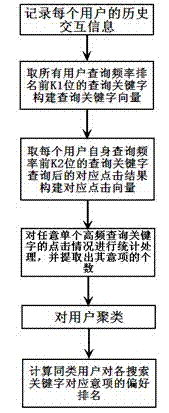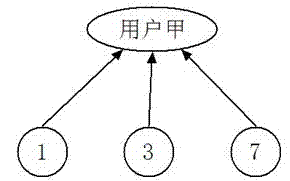Word meaning extracting method based on search interactive information and user search intention
A technology of interactive information and search intent, applied in the field of word meaning extraction based on search interaction information and user search intent, can solve the problems of limiting the text field, dividing the number of word meanings, and high manual labeling costs, so as to avoid poor results and avoid costs. effect of the problem
- Summary
- Abstract
- Description
- Claims
- Application Information
AI Technical Summary
Problems solved by technology
Method used
Image
Examples
Embodiment Construction
[0036] In order to avoid the problem of data sparseness, the method of the present invention only uses high-frequency query keywords when processing query keywords, that is, only query keywords with the top K1 ranking in the query ranking frequency of all users for processing; similarly, different users The use frequency of each query keyword is high or low. To avoid accidental factors, only the top K2 query keywords of each user's own query frequency are selected for processing.
[0037] figure 1 Shown is a flowchart of the method of the present invention. The steps of the method of the present invention are as follows:
[0038] Step 1: Record the historical interaction information of each user. The historical interaction information includes query keywords, query time, and corresponding clicks. The query keywords are used to construct the query keyword vector, and the corresponding clicks are used to construct the corresponding click vector. , The query time is used to lock the c...
PUM
 Login to View More
Login to View More Abstract
Description
Claims
Application Information
 Login to View More
Login to View More - R&D
- Intellectual Property
- Life Sciences
- Materials
- Tech Scout
- Unparalleled Data Quality
- Higher Quality Content
- 60% Fewer Hallucinations
Browse by: Latest US Patents, China's latest patents, Technical Efficacy Thesaurus, Application Domain, Technology Topic, Popular Technical Reports.
© 2025 PatSnap. All rights reserved.Legal|Privacy policy|Modern Slavery Act Transparency Statement|Sitemap|About US| Contact US: help@patsnap.com



